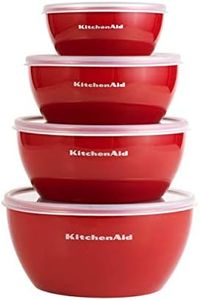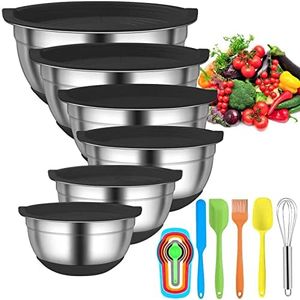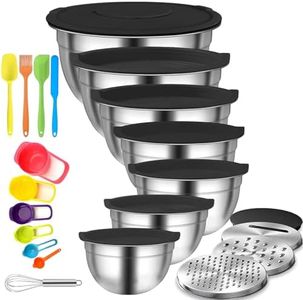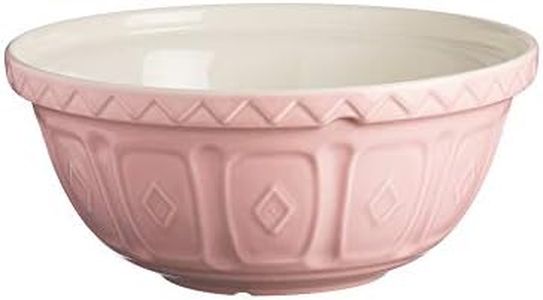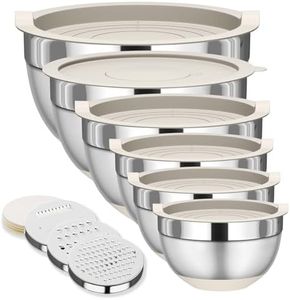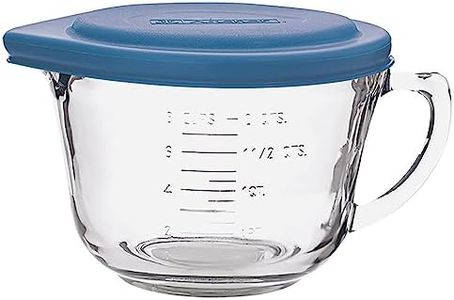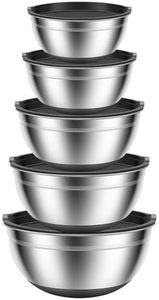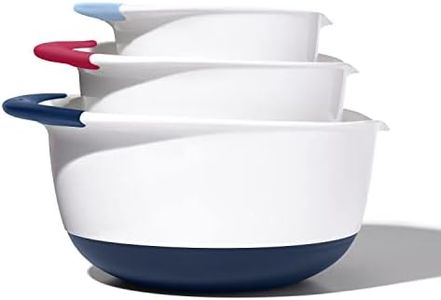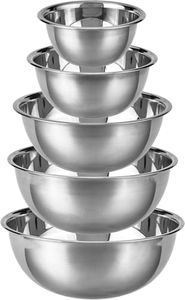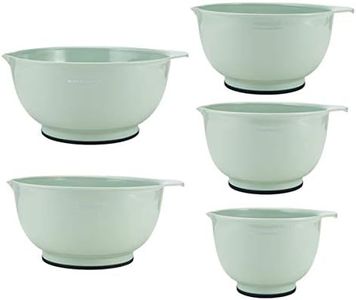We Use CookiesWe use cookies to enhance the security, performance,
functionality and for analytical and promotional activities. By continuing to browse this site you
are agreeing to our privacy policy
10 Best Mixing Bowls
From leading brands and best sellers available on the web.By clicking on a link to a third party's website, log data is shared with that third party.
Buying Guide for the Best Mixing Bowls
Choosing the right mixing bowls is about understanding your cooking and baking needs and selecting bowls that fit both your kitchen space and your typical recipes. Mixing bowls are a staple in almost every kitchen, used for anything from prepping ingredients and tossing salads to mixing dough or batters. To find the best bowls for you, pay attention to the sizes, materials, convenience features, and how easy they are to store and clean.MaterialMixing bowls are most commonly made from stainless steel, glass, plastic, or ceramic. The material affects durability, weight, usability, and sometimes safety. Stainless steel bowls are lightweight, durable, and typically resistant to stains and odors. Glass bowls are heavier, microwave safe, and let you see contents but can chip or break. Plastic bowls are lightweight and inexpensive, though some absorb odors or stain with use. Ceramic bowls are heavy, often decorative, and good for serving, but can be fragile. Think about what you use your bowls for and where you’ll store them; if you need to microwave or use a mixer, your needs might point toward a particular material.
Size and Number of BowlsMixing bowl sets often contain three to six bowls of various sizes. The range typically includes small (about 1 quart) for whisking dressings or beating eggs, medium (2-3 quarts) for mixing batters or prepping vegetables, and large (4-6 quarts or more) for mixing dough or tossing salads. Think about the recipes you make most often and what size bowls those require. If you bake a lot or cook large meals, lean on larger sets or separate bigger bowls. For smaller kitchens or households, a set with three nested bowls could be plenty.
Ease of CleaningCleaning your mixing bowls should be straightforward. Stainless steel, glass, and most plastics can go in the dishwasher, but not all ceramics or some plastics can withstand frequent dishwasher use. If you’ll be handwashing, consider how easily the bowl wipes clean and whether it absorbs odors or stains. Choosing bowls labeled as dishwasher-safe if you use a dishwasher, or those with slick, non-porous surfaces, will keep things simple in the long run.
Grip and Base FeaturesSome mixing bowls come with non-slip bases or handles. A non-slip base helps keep the bowl steady while mixing, which is especially helpful when working with thick doughs or using one hand. Bowls with handles or pouring spouts make it easier to control and pour batters or dressings. If you do a lot of heavy mixing or pour out a lot of liquids, look for bowls with these added features for convenience and safety.
Storage and NestingMixing bowls that nest inside each other can save a lot of cupboard space—great for smaller kitchens or for those with limited storage. Stackable sets are easier to keep organized and transport, and they’re less likely to go missing. If space is tight, prioritize sets that are designed to fit snugly together, possibly including lids for storing leftovers right in the bowl.
